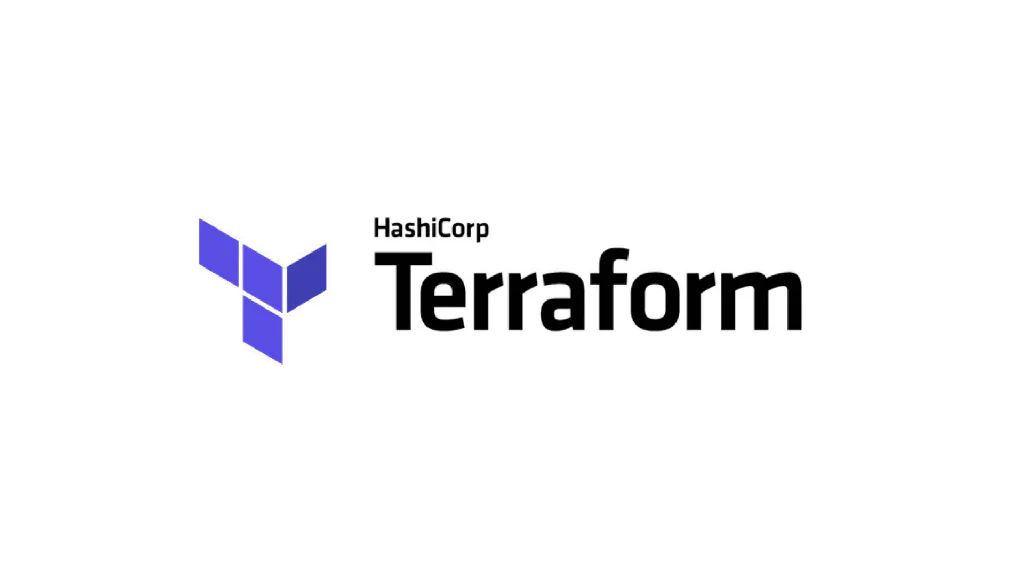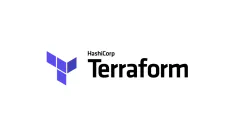Mastering Terraform Dependencies in Azure Infrastructure
Dive into the fundamentals of Terraform state management on Azure. This beginner-friendly guide explains what Terraform state is, why it's crucial for managing your infrastructure as code, and how to handle it safely. Learn about local state, basic state commands, and best practices to kickstart your Terraform journey on Azure.
Introduction
Hey there Everyone 👋 Welcome back to our exciting journey of Terraform on Azure. If you’ve been following along, you’ve already learned some core concepts about Terraform - you’ve set up your environment , created your first Azure resources , and even dived into the Terraform state file . Awesome work so far! 🎉
Today, we’re going to explore something that happens behind the scenes every time you interact with Terraform: dependencies. While the word might sound like technical jargon, the concept behind it is really simple - it’s all about the order in which things need to happen.
What Are Dependencies in Terraform?
Think about building a house. You can’t install the roof before you’ve built the walls, and you can’t build walls before you’ve laid the foundation. There’s a natural sequence that must be followed for the structure to stand properly. This same principle applies to creating resources in Azure through Terraform.
Dependencies are simply the relationships between your resources that determine the order in which they need to be created, updated, or deleted. When Resource A depends on Resource B, Terraform knows to create Resource B first.
For example, in our previous project, we created:
- A resource group
- A virtual network inside that resource group
- A subnet within that virtual network
- A network interface card that connects to that subnet
- A virtual machine that connects to that network interface card
Each resource in this chain depends on the one before it. Terraform ensures everything is built in the proper sequence - just like constructing a building where each phase must be completed before the next can begin.
Why Understanding Dependencies Matters
“But wait! You might be thinking, I thought Terraform is supposed to handle this automatically for me. That is the whole idea of using Terraform: you describe your infrastructure, and Terraform takes care of how to implement it.”
You’re absolutely right. Terraform is smart enough to figure out many of those dependencies on its own, but it still needs your guidance in certain situations. The relationship works both ways - Terraform handles the heavy lifting, but it relies on how you structure your code to understand the complete picture.
Understanding dependencies will help you:
Write Better Terraform Code: Terraform works collaboratively with you. While it can detect many relationships automatically, you still need to tell Terraform specific details - like which subnet a network interface card belongs to, or which resource group should contain your virtual network. Knowing how these relationships work helps you express your infrastructure intentions clearly.
Debug Problems Faster: When deployments fail, understanding dependencies makes it easier to identify whether the issue is related to resource creation order. Many Terraform errors that seem cryptic at first are simply dependency problems in disguise - one resource trying to use another that doesn’t exist yet or hasn’t been fully created.
Build More Complex Infrastructure: As your Azure projects grow beyond simple examples, you’ll create more sophisticated resource relationships. Understanding dependencies helps you tell Terraform exactly what builds on what, especially for complex scenarios where the automatic detection might not be sufficient.
Avoid Common Mistakes: Dependency issues can lead to frustrating errors that seem random but have simple causes. For example, trying to reference a property of a resource that hasn’t been created yet is a common mistake. Understanding dependencies helps you avoid these simple but sometimes subtle errors.
By understanding how Terraform manages dependencies, you’re not fighting against the tool but working with it more effectively. Think of it like learning to drive a car - the car does most of the work, but you still need to understand how to steer it in the right direction!
What We’ll Explore Together
In this guide, we’ll cover:
- How Terraform automatically figures out most dependencies for you
- The difference between implicit dependencies (which happen automatically) and explicit dependencies (which you define)
- Real-world examples of common Azure resource dependencies
- Simple tools to help visualize your resource relationships
- Practical tips for avoiding dependency-related problems
By the end of this article, you’ll have a solid understanding of how Terraform organizes your Azure resources behind the scenes. This knowledge will make you more confident in building your infrastructure and will serve as a foundation for more advanced Terraform skills.
Ready to see how Terraform puts everything together in the right order? Let’s dive in!
Types of Dependencies in Terraform
Now that we know why dependencies are important, let’s dive into the different types of dependencies you’ll encounter in your Terraform journey.
Implicit Dependencies: Terraform Figures These Out Automatically
Implicit dependencies are the ones that Terraform can figure out on its own when you reference one resource in another resource’s configuration. You don’t need to explicitly tell Terraform about these dependencies - they’re detected through your code structure.
Let’s look at an example using Azure resources:
resource "azurerm_resource_group" "example" {
name = "example-resources"
location = "Australia East"
}
resource "azurerm_virtual_network" "example" {
name = "example-network"
resource_group_name = azurerm_resource_group.example.name
location = azurerm_resource_group.example.location
address_space = ["10.0.0.0/16"]
}
In this code, the virtual network has an implicit dependency on the resource group. By using azurerm_resource_group.example.name and azurerm_resource_group.example.location in the virtual network configuration, we’re indirectly telling Terraform: “This virtual network needs the resource group to exist first.”
Terraform automatically understands that it needs to create the resource group before it can create the virtual network. It detects this relationship through the references in your code.
Implicit dependencies are convenient because:
- They keep your code clean and straightforward
- Terraform handles them automatically
- They naturally reflect the relationships between your resources
How Terraform Provisions Resources
Before we talk about explicit dependencies, it’s important to understand how Terraform approaches resource creation:
Terraform doesn’t just provision resources in the order they appear in your files. Instead, it:
- Analyzes your entire configuration
- Builds a dependency graph showing which resources depend on others
- Creates a plan to deploy resources in the correct order
- Deploys independent resources in parallel to save time
For example, if you have two virtual machines that don’t depend on each other, Terraform will deploy them at the same time. But if both VMs need the same virtual network, Terraform will create the network first, then deploy both VMs in parallel.
This parallel processing is usually what you want - it makes deployments faster. But sometimes it creates issues when there are dependencies that Terraform can’t detect from your code alone.
Explicit Dependencies: When You Need to Control the Order
Sometimes you need to explicitly tell Terraform about dependencies that it can’t detect automatically. This is where the depends_on attribute comes in.
The depends_on attribute is added to the resource that depends on another resource. It tells Terraform: “Wait until these other resources are completely finished before you start creating this one.”
A Real-World Scenario: Running Scripts on VMs
Let’s consider a common scenario in Azure: you provision a virtual machine, and then you want to run a setup script on it to install software or configure settings.
Azure provides a feature called VM Extensions that lets you do this. When you use Terraform to manage your infrastructure, you might think: “I’ll create a VM, then use a VM Extension to run my setup script.”
This seems straightforward, but there’s a challenge. Let’s look at a simplified example:
resource "azurerm_virtual_machine_extension" "vm_extension" {
name = "custom-script"
virtual_machine_id = azurerm_virtual_machine.vm.id
publisher = "Microsoft.Azure.Extensions"
type = "CustomScript"
type_handler_version = "2.0"
settings = <<SETTINGS
{
"commandToExecute": "powershell -File setup.ps1"
}
SETTINGS
depends_on = [azurerm_virtual_machine.vm]
}
Don’t worry about understanding all the details of this code. The important point is that we’re trying to:
- Reference a VM using its ID (
virtual_machine_id = azurerm_virtual_machine.vm.id) - Run a script on that VM
You might be thinking, but wait - we’re already referencing the VM’s ID. Shouldn’t that create an implicit dependency? Why do we also need the depends_on line?
Understanding Why Resource IDs Aren’t Enough
Here’s what happens behind the scenes:
- When Terraform tells Azure to create a VM, Azure immediately assigns an ID to the VM
- Terraform can access this ID very early in the provisioning process, often before the VM is actually ready to use
- From Terraform’s perspective, it has what it needs (the VM ID) to create the extension
- Without
depends_on, Terraform would proceed to create the extension using this ID while the VM is still being set up
This is where the problem occurs. The VM might have an ID, but it’s not yet in a running state where it can execute scripts. Creating the extension at this point would cause the deployment to fail with an error like: “The specified VM is not in a running state. The VM must be running before executing custom scripts.”
Think of it like getting a home address before the house is built. Having the address doesn’t mean you can move in yet!
The VM ID reference alone isn’t enough for Terraform to understand this timing requirement. Terraform sees that it has the ID it needs, so as far as it’s concerned, it can move forward with the extension creation.
Adding depends_on tells Terraform: “Even though you have the VM ID, don’t create the extension until the entire VM resource is fully provisioned and operational.”
When to Use Explicit Dependencies: Understanding “Exists” vs. “Ready”
You might be wondering: “If Terraform only waits for resource IDs before moving on, wouldn’t that cause problems for many resources, not just VM extensions?”
This is an insightful question! In practice, there’s a crucial distinction to understand:
For most Azure resources, having the ID (meaning the resource exists in Azure) is enough for dependent resources to be created successfully. For example:
- A subnet can be linked to a network interface card as soon as the subnet exists and has an ID
- A storage account can be referenced by an Azure Function as soon as the storage account has an ID
- A resource group can contain other resources as soon as the resource group exists
For some specific scenarios, a resource needs to be not just created but fully operational before another resource can use it. This is where explicit dependencies become necessary.
You should consider using depends_on when:
A resource needs “readiness” not just “existence” - When another resource needs your resource to be fully operational, not just having an ID
- Example: VM extensions need a running VM, not just a VM that exists
- Example: Key Vault secrets need the vault’s security features to be fully initialized
There’s a timing aspect - When Terraform needs to wait longer than it normally would
- In these cases, Terraform’s usual behavior of moving forward once it has an ID would lead to errors
- The
depends_onattribute forces Terraform to wait for complete provisioning
You’re experiencing deployment failures - When you see errors suggesting a resource isn’t ready
- Error messages like “resource not in running state” or “not fully provisioned”
- Intermittent failures during deployment that succeed on retry (a sign of timing issues)
This is why implicit dependencies work fine in most cases - Terraform’s approach of waiting for resource IDs before creating dependent resources is usually sufficient. Explicit dependencies with depends_on are only needed for those special cases where “exists” isn’t enough, and “fully operational” is required.
Think of it like the difference between a house having an address (it exists) versus being move-in ready (fully operational). For mail delivery, just having the address is enough. For living there, the house needs to be complete.
How Terraform Determines the Order of Operations
With all this dependency information, Terraform:
- Creates a resource graph showing which resources depend on which others
- Determines which resources can be created in parallel and which must be sequential
- Executes the plan in the most efficient order that respects all dependencies
This process ensures that everything gets created in the right order, avoiding errors while still being as efficient as possible.
Now that you understand how dependencies work, let’s look at some simple best practices that will help you write cleaner Terraform code and avoid common dependency issues.
Best Practices for Managing Dependencies
Let’s wrap up with some practical tips to help you manage dependencies effectively in your Terraform configurations:
1. Use Implicit Dependencies Where Possible
Terraform is smart about figuring out dependencies. Whenever you can, reference attributes of one resource in another to create natural dependency relationships:
resource "azurerm_network_interface" "example" {
name = "example-nic"
location = azurerm_resource_group.example.location
resource_group_name = azurerm_resource_group.example.name
ip_configuration {
name = "internal"
subnet_id = azurerm_subnet.example.id
private_ip_address_allocation = "Dynamic"
}
}
This approach keeps your code clean and lets Terraform do what it does best.
2. Only Use Explicit Dependencies When Necessary
Use depends_on only when you need to - when there’s a relationship that Terraform can’t detect on its own:
resource "azurerm_virtual_machine_extension" "example" {
# ... extension configuration ...
# Comment explaining why this dependency is needed
depends_on = [azurerm_virtual_machine.example]
}
3. Organize Your Code Logically
While Terraform doesn’t create resources in the order they appear in your files, organizing your code in a logical sequence helps you and your teammates understand the relationships:
- Resource groups first
- Networking components next
- Storage resources
- Compute resources
- Extensions and configurations last
This makes your code more readable and helps you visualize dependencies.
4. Preview Changes with Terraform Plan
Always run terraform plan before applying changes. This shows you how changes will affect your resources and their dependencies:
terraform plan
Reviewing the plan output helps you catch dependency issues before they cause problems.
5. Document Your Dependency Decisions
When you make decisions about resource dependencies, especially when using explicit dependencies, document your reasoning.
By following these simple practices, you’ll create more reliable Terraform configurations with fewer dependency issues.
Conclusion
You’ve now learned one of the most important concepts in Terraform: how resources depend on each other and how Terraform manages these relationships. Let’s recap what we’ve covered:
- Implicit dependencies are automatically detected by Terraform when you reference one resource in another
- Explicit dependencies using
depends_onare needed in special cases where timing is important
This knowledge builds directly on what you’ve learned in previous articles. Your resource groups, virtual networks, and VMs from our first project all had dependencies that Terraform handled behind the scenes. The state file we explored tracks all these relationships to know what’s connected to what.
As you move forward to variables and modules in our upcoming articles, dependencies will continue to play a crucial role. Variables will help you customize your resources while maintaining their dependency relationships. Modules will let you package related resources together with their dependencies intact, making your infrastructure more reusable.
Keep Practicing!
Remember, the key to mastering Terraform is practice. Don’t be afraid to experiment with different Azure resources and dependency structures. Create test environments, break things, and learn from the process. Every error message is an opportunity to deepen your understanding!
Ready to continue your Terraform journey? In our next article, we’ll explore Terraform variables - the key to making your infrastructure flexible and reusable. See you there 🙂
Stay strong 💪, and happy Terraforming!





Comments